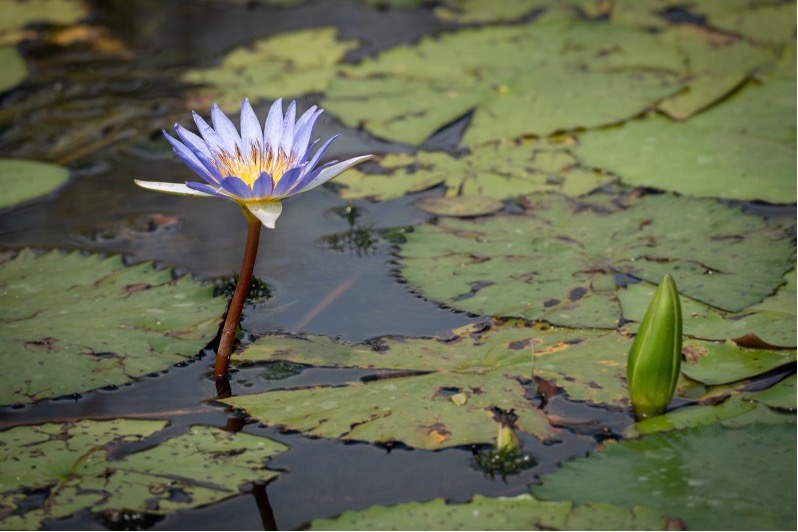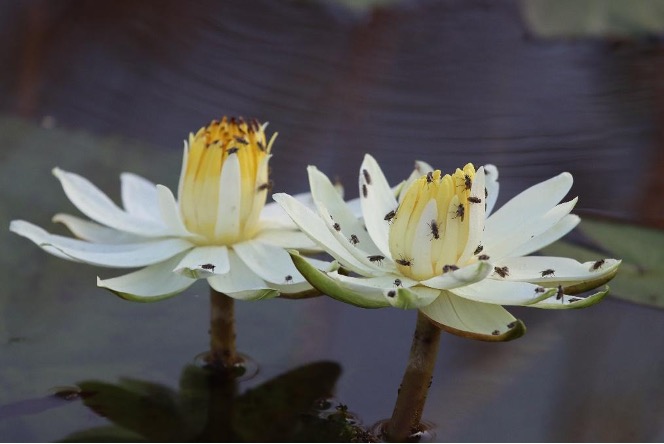November 2024
Biodiversity
Blue water-lily
in BiodiversityShare:
Blue water-lily

Summer has arrived, bringing with it our first rains. The bush is now lush and vibrant, and the animals and birds are thriving as there is plenty of food and water for everyone. Bush activities at Singita Kruger National Park become even more captivating during this time. Heading out on a morning game drive, the fresh air and the sweet scent of flowers from various trees, like the ‘purple pod cluster leaf’, create a unique experience that is different from the excitement of chasing the Big Five.
Although the N’wanetsi River has yet to start flowing, this makes it easier for us to access the entire concession through the crossing points. One of my favourite spots is Dave’s Crossing, where I love to get out of the vehicle with guests and enjoy the panoramic view of the river from the concrete slab.
There is so much to see when we stop there—crocodiles, a variety of water birds, mammals, and a range of plants, all accompanied by the soothing sound of running water, which adds to the charm of the experience.
There is so much to see when we stop there—crocodiles, a variety of water birds, mammals, and a range of plants, all accompanied by the soothing sound of running water, which adds to the charm of the experience.
One morning, we stopped at Dave’s Crossing with a lovely elderly couple staying at Lebombo Lodge. Having already seen everything they hoped to during their visit, we decided to enhance their experience with some birdwatching and a bit of meditation by the crossing. We observed different birds fishing and searching for food, while a crocodile sunbathed in the distance. The couple was so engaged that they even took time to admire the blue water-lilies as they began to open.
The blue water-lily is a well-known and cherished wildflower, valued not only for its beauty but also for its numerous medicinal properties. It is used as an antiseptic and to treat bladder and kidney issues, chest complaints, diabetes, diarrhea, skin problems, and infertility. Many animals depend on the water-lily for survival. The African jacana, for example, uses its long toes to traverse the lily pads in search of food, earning it the nickname "lily-trotter." Bees and other insects gather nectar and pollen from the flowers, sometimes becoming temporarily trapped in the plant’s clever mechanism, which ensures cross-pollination. The female part of the flower matures first, releasing a sticky substance to attract insects. Once an insect lands, it becomes entangled, wiggling to free itself while inadvertently transferring pollen. After a few days, the stickiness dries, and the male part of the flower matures, dusting the insect with fresh pollen before it flies away.
The water-lily’s benefits extend beyond animals. Humans harvest its fruit, which can be eaten or dried and milled into flour. The rhizome can be roasted for a nutritious, though bland, meal, and the roots are used for dye. The lily pads are also applied to treat sunburn, providing relief from blistering, and the sap from the stems and roots serves as a natural sunblock.

A water-lily bud, much like its leaves, starts underwater and gradually rises to the surface as it matures. The flower blooms only during the day, lasting for five days. After pollination, it sinks back underwater, where the fruit develops. The fruit eventually bursts, releasing buoyant seeds that begin the cycle once again.
It was a truly special experience to watch the flowers open and observe the insects pollinating them. For our guests, it became the highlight of their entire stay.

By Evidence Nkuna
Field Guide


